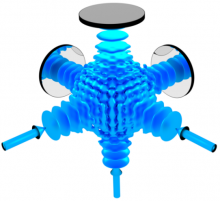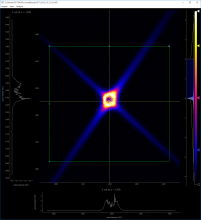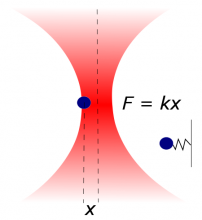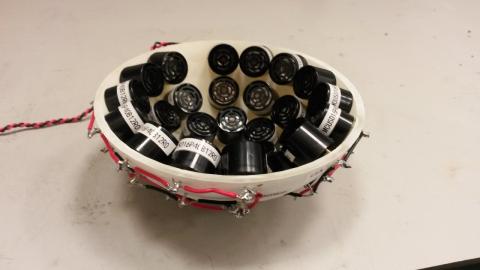Many-body Quantum Dynamics at Physics at Work 2018
Many-body Quantum Dynamics
Tweezers, tractor beams, and atoms

Superconductors, topological insulators, quasicrystals: new materials like these will give rise to exciting future technologies. The trouble is that all these materials are difficult to understand as they contain vast numbers of electrons whizzing around a complicated crystal lattice. In the Many-Body Quantum Dynamics group we’re interested in understanding these materials by building experiments that recreate their amazing behaviour, but in a way that’s much easier to study: with whole atoms instead of tiny electrons We replace the crystal lattices with patterns of light made by interfering laser beams, and we replace the electrons with atoms that move through these patterns. This way we have far more control over our “material”, and because atoms are so much heavier than electrons, they’re slower and easier to observe.
 This brings many experimental challenges. In particular, for the atoms to stay in the optical lattice, they need to be cooled to temperatures below 100 nK: less than a millionth of a degree above absolute zero, far colder than outer space. This requires us to hold onto the atoms for some time while we cool them. Unfortunately, no-one has yet built tweezers small enough to grip a single atom! Instead, we grip our atoms with optical tweezers: laser beams focused down small enough to hold a cloud of atoms.
This brings many experimental challenges. In particular, for the atoms to stay in the optical lattice, they need to be cooled to temperatures below 100 nK: less than a millionth of a degree above absolute zero, far colder than outer space. This requires us to hold onto the atoms for some time while we cool them. Unfortunately, no-one has yet built tweezers small enough to grip a single atom! Instead, we grip our atoms with optical tweezers: laser beams focused down small enough to hold a cloud of atoms.
 An atom in a laser beam will continually absorb and re-emit photons, and this results in a force that can be attractive or repulsive depending on the laser’s frequency. If it’s made attractive, the atoms will be held together at the focus of the laser where the intensity is highest, and if we slowly move the focus the atomic cloud will follow.
An atom in a laser beam will continually absorb and re-emit photons, and this results in a force that can be attractive or repulsive depending on the laser’s frequency. If it’s made attractive, the atoms will be held together at the focus of the laser where the intensity is highest, and if we slowly move the focus the atomic cloud will follow.
This technique lets researchers precisely control tiny objects, from single atoms up to molecules and even cells. In our exhibit, we will explore how similar physics can be applied to bigger things. Can we lift something a millimetre in size without touching it? We can, but using sound instead of light: a sonic tractor beam.
This works by creating a pattern of many interfering sound waves to create regions of high and low pressure. A sufficiently light object will be pulled into the low-pressure regions and levitated against gravity. This can be used to lift all kinds of things: beads, small pieces of foam, even insects! The precise position of the object can be manipulated by changing the intensity of the sound waves, giving much finer control than a human hand.
In our exhibit, we will demonstrate the sonic tractor beam and explain more about the exciting potential of atomic physics to help us understand new materials and build towards the technologies of the future.

